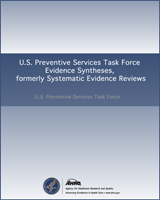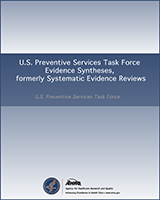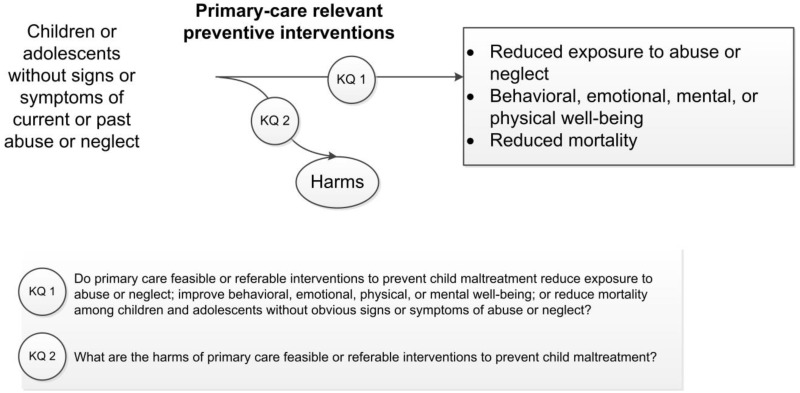NCBI Bookshelf. A service of the National Library of Medicine, National Institutes of Health.
Viswanathan M, Fraser JG, Pan H, et al. Primary Care Interventions to Prevent Child Maltreatment: An Evidence Review for the U.S. Preventive Services Task Force [Internet]. Rockville (MD): Agency for Healthcare Research and Quality (US); 2018 Nov. (Evidence Synthesis, No. 170.)
This publication is provided for historical reference only and the information may be out of date.

Primary Care Interventions to Prevent Child Maltreatment: An Evidence Review for the U.S. Preventive Services Task Force [Internet].
Show detailsFigure 1Analytic Framework
*The World Health Organization and International Society for Prevention of Child Abuse and Neglect define child maltreatment as including “all forms of physical and/or emotional ill-treatment, sexual abuse, neglect, or negligent treatment or commercial or other exploitation, resulting in actual or potential harm to the child’s health, survival, development, or dignity in the context of a relationship of responsibility, trust, or power” (1). Maltreatment includes physical abuse, neglect, sexual abuse/exploitation, emotional abuse, parental substance abuse, and abandonment.”3
Abbreviations: KQ=key question.
- Figure 1, Analytic Framework - Primary Care Interventions to Prevent Child Maltr...Figure 1, Analytic Framework - Primary Care Interventions to Prevent Child Maltreatment: An Evidence Review for the U.S. Preventive Services Task Force
Your browsing activity is empty.
Activity recording is turned off.
See more...

